Related Research Articles

Świdnica is a city in south-western Poland in the region of Silesia. As of 2021, it has a population of 55,413 inhabitants. It lies in Lower Silesian Voivodeship, being the seventh largest town in that voivodeship. It is the seat of Świdnica County, and also of the smaller district of Gmina Świdnica. Świdnica became part of the Wałbrzych agglomeration on 23 January 2014.
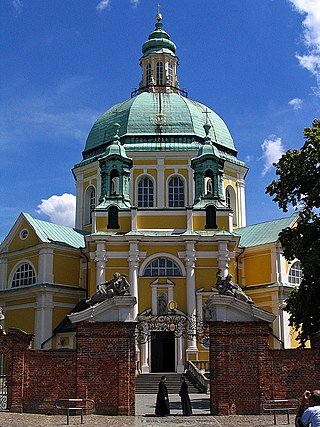
Gostyń is a town in western Poland, seat of the Gostyń County and Gmina Gostyń in the Greater Poland Voivodeship. According to 30 June 2004 data its population was 20,746.

Cyprian Kamil Norwid, a.k.a. Cyprian Konstanty Norwid, was a nationally esteemed Polish poet, dramatist, painter, and sculptor.
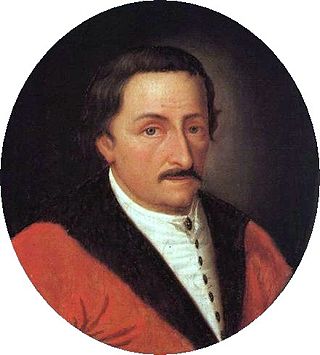
Andrzej Maksymilian Fredro was a Polish szlachcic and writer.

Władysław Tatarkiewicz was a Polish philosopher, historian of philosophy, historian of art, esthetician, and ethicist.
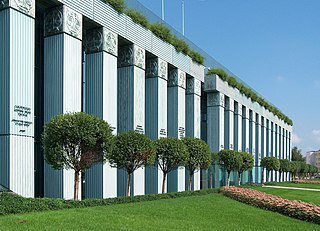
The Supreme Court is the highest court in the Republic of Poland. It is located in the Krasiński Square, Warsaw.

The Battle of Chełm was fought on 8 June 1794 between Poland and the combined forces of the Russian Empire and Prussia. The Polish were led by Józef Zajączek, the Russo-Prussian forces by Petrowicz Zagriażski and Wilhelm Derfelden. The Russo-Prussian forces consisted of 16,500 soldiers, and 24 cannons, while the Polish general only had about 6,000 soldiers, 14 cannons, and 2,000 peasant soldiers armed with war scythes.
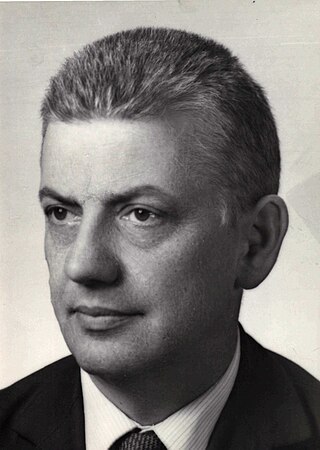
Henryk Zieliński was a Polish historian and professor at the University of Wrocław.

Karol Podczaszyński was a Polish-Lithuanian leading Vilnius architect, a representative of the neoclassical architecture and a professor of the Vilnius University, as well as one of the pioneers of industrial design.

Stanisław Marian Kutrzeba (1876–1946) was a Polish historian and politician who was Professor of the Jagiellonian University from 1908, and then until the end of his life the Chair of Studies in Polish law. He was chair of the Law Department, university's rector (1932/33), General Secretary of Polish Academy of Learning (1926–39) and its president (1939–1946). He was one of many professors of Jagiellonian University arrested by Nazis during Sonderaktion Krakau in 1939. After being freed in 1940, he took part in the underground education. In 1945, he was deputy to the State National Council.
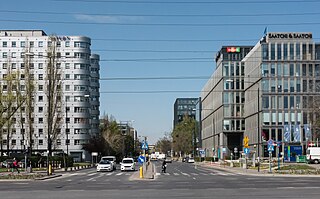
Służewiec is a neighbourhood, and an area of the Municipal Information System, in the city of Warsaw, Poland, located within the district of Mokotów. The neighbourhood consists of the residential apartments, and the office buildings, containing one of the biggest complexes of office buildings in Poland, and one of the most important office centres in the city. It contains many headquarters of branches of many domestic and multinational corporations.

Józef Kalasanty Szaniawski was a Polish philosopher and politician.

Piotr Chmielowski was a Polish philosopher, literary historian and critic.

Michał Wiszniewski was a Polish philosopher, psychologist, and literary historian.

Stefan Adam Garwatowski or Gerwatowski was a Polish painter. He was an alumnus of Academy of Fine Arts in Warsaw (1956).

Jan Krzysztof Żaryn is a Polish historian, professor and politician, who was a Senator in the Senate of Poland from 2015 to 2019.

Wydawnictwa Szkolne i Pedagogiczne is a Polish educational book publisher founded in Warsaw, Poland, in 1945.
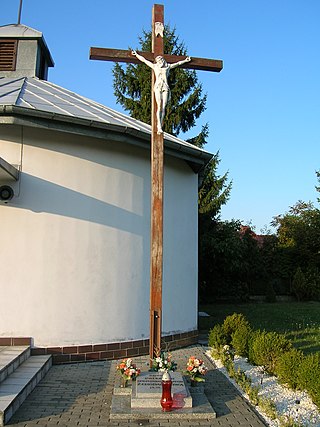
The Chodaczków Wielki massacre occurred on 16 April 1944 when 862 Poles were killed by the 14th Waffen Grenadier Division of the SS in the village of Chodaczków Wielki in German occupied Poland
References
- ↑ "Polska. Środki przekazu. Prasa, Encyklopedia PWN: źródło wiarygodnej i rzetelnej wiedzy". encyklopedia.pwn.pl (in Polish). Retrieved 2023-04-04.
- ↑ Dwornik, Bartłomiej. "Historia prasy polskiej - do roku 1796". reporterzy.info (in Polish). Retrieved 2023-04-04.
- ↑ Pepliński, Wiktor (2011). "350 lat historii prasy w Polsce (spojrzenie na jej przeszłość i teraźniejszość)". Studia Medioznawcze (in Polish). 45 (2): 25–39. ISSN 1641-0920.
- ↑ Garlicka, Aleksandra (1962). "Rozwój badań nad historią prasy w Polsce (część 1: do 1939 roku)" (PDF). Rocznik Historii Czasopiśmiennictwa Polskiego. 1: 7–48.
- ↑ Wójcik, Ewa (2020-07-31). "W dwudziestolecie powołania „Rocznika Historii Prasy Polskiej". Profesor Jerzy Jarowiecki — założyciel i wieloletni jego redaktor". Rocznik Historii Prasy Polskiej (in Polish). 23 (2): 5–25. ISSN 2084-8552.